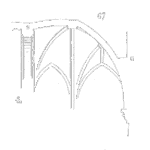
The process to design and deliver a reliable product involves identifying risks. Taking action to understand or mitigate those risks involves much of the day to day work of reliability engineering.
Taking action to set expectations and improve decisions involves change. Change of understanding, change of specifications, change of expectations, change of designs, processes, and results.
It is the changes, big and small, that occur that achieve the desired results for the customer and organization.
You also know that not every suggestion is greeted warmly. Not every proposal is funded. Not every recommendation is accepted.
There will be Resistance to Change
When confronted with a detour sign on your normal route to work, you may feel your own resistance to change. That jolt that you need to use an alternate route. The listing of concerns from being late for your first meeting to finding an alternate coffee shop.
Change takes effort. Instead of doing what we are comfortable doing, we have to try something else. We already have enough to learn each day, one more task to master is often not a welcome addition.
Think of the work involved to improve the reliability of your system. There is inertia. The team may even recognize the need to improve reliability, yet the looming unknown amount of change may overwhelm those initial steps toward investigating and implementing the proposed changes.
Evidence of Change Negative Bias
A recent study out of the University of Chicago [The tipping point of perceived change: Asymmetric thresholds in diagnosing improvement versus decline.] suggests there is a negative bias when evaluating the data suggesting something has changed. We are much more likely to agree with and accept as fact a set of data showing a negative change. We are less likely to accept as convincing that same magnitude of data for a positive change.
When presenting actual improvements to product reliability performance, it takes more convincing data to get others to accept the improvement is real. A decrease, of the same magnitude, in reliability performance quickly finds acceptance that the changes are significant.
This negative bias exists with actual evidence. I suspect that when making recommendations or proposals the view of the perceived results of the changes likewise has a negative headwind. It is easier to believe failure over success given the same amount of actual change.
Best Practice to Manage Change
Change requires effort beyond the technical assessments, reviews, engineering, evaluations, testing, etc. It takes an effort to maintain support across your team to implement and accept that proposed changes.
Here are a few best practices to keep in mind as you work to implement change:
1. Create a clear vision of the benefits of the change. Articulate a concise, crystal clear, understandable, summary of the outcome of the proposed change. ‘Start with the end in mind’ [Covey] to provide direction and goal for others to rally around.
2. Define who does what concerning the proposed change. Who has oversight, who makes decisions, who implements tasks, who benefits, etc? Define communication structures, decision authorities, roles and responsibilities, and stakeholders.
3. Communicate, communicate, communicate. Across the team involved, the leadership or oversight team, and the stakeholders. Milestones, triggers, and updates all help to keep the project visible, supported, and moving toward the goal.
4. Find and support the advocates. Some individuals will become champions that actively want to ensure the project succeeds. Help them with information, insights, and opportunities to share their enthusiasm.
5. Check assumptions, monitor progress, and review the plan. Setting a team on the start of a change process is just the start. Help keep your team on the path toward the objective of the change. Likewise, evaluate if the initial goal remains the right goal.
6. Support buy-in and support across the organization and especially with the stakeholders by addressing their concerns and suggestions. Listen and respond honestly. Those involved or impacted by the change will have a different view of the situation and impact than you. There is tremendous value in the information they share with you and by really listening and understanding both the positive and negative comments, you strengthen the chance of a successful result of the change effort.
Learn more about Change Management
7 Organizational Change Management Best Practices http://www.consultparagon.com/blog/7-organizational-change-management-best-practices
10 Best Practices and Advice for the Change Management Process http://www.quickbase.com/blog/10-best-practices-in-change-management
Abudi, G. (2013). Change management would be easy if people weren’t involved: best practices for managing the people-side of change management. Paper presented at PMI® Global Congress 2013—North America, New Orleans, LA. Newtown Square, PA: Project Management Institute. https://www.pmi.org/learning/library/change-management-best-practices-5868
The Tipping Point of Perceived Change: Asymmetric Thresholds in Diagnosing Improvement Versus Decline, Ed O’Brien and Nadav Klein, University of Chicago, Journal of Personality and Social Psychology, 2017. Vol 112. No. 2, 161-185 http://home.uchicago.edu/~nklein/PerceivedChange.pdf
Very good and practical tips for managing change. It will still be difficult due to peoples inherent bias against change but this advice will definitely help stakeholders cope better.
Proper initiatives need to be driven for a successful business transformation. You have to know everything abut change in order to become a competent change manager. To become a change manager, you need to develop an entrepreneurial attitude. Always you need to keep your focus on improving the company’s performance in the market place. You have to develop the ability to hold yourself responsible for your team’s performance. Developing a strong communication skill, conflict resolution skill, and passion for the current change, will make you good at change management.